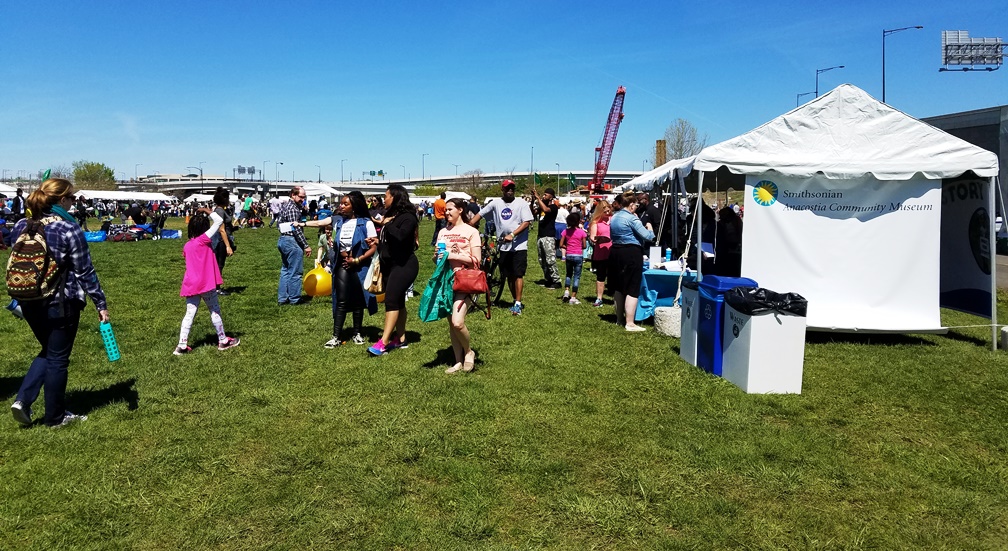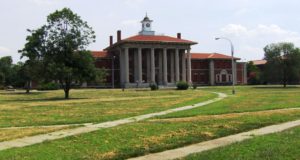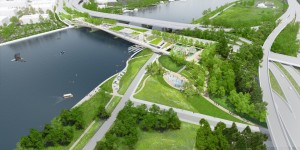Real estate developers are starting to look across Washington, DC’s Anacostia River to the east side, whihc is now seeing long-awaited redevelopment. Federal, local and private-sector resources are being to be funneled into the St. Elizabeths Campus (a former federal mental asylum) in the Congress Heights neighborhood, with an eye at revitalizing the area.
To ensure that any redevelopment will lead to equitable outcomes for the surrounding residents D.C. Mayor Muriel Bowser, her staff, and neighborhood leaders are working with the Daniel Rose Center for Public Leadership. In their successful application to become a Rose Center fellowship program city for 2017, they stated a goal of ensuring the revitalization supported the existing neighborhood “rather than result in displacement or its continued economic and social isolation.”
Bowser and her team have reason to be focused on whether existing residents will benefit from the development. Areas of Washington that have been considered working class for decades have been made anew by developers and newcomers. Home to some of the largest redevelopment projects in the country, neighborhoods of rowhouses and corner stores are now replete with new condos and high priced small-plate restaurants.
The decisions about how to reinvigorate the community while revitalizing the St. Elizabeths campus may be particularly tricky. St. Elizabeths Hospital opened in 1855 as the first federally operated psychiatric hospital in the United States. Housing over 8,000 patients at its peak in the 1950s, the hospital at one point had a fully functioning medical-surgical unit, a school of nursing, and accredited internships and psychiatric residencies.[4]
Since 2010, hospital functions have been limited to a portion of the east campus operated by the District of Columbia Department of Mental Health. The remainder of the east campus is slated for redevelopment by the District of Columbia which owns the site. The west campus is owned by the federal government and is being redeveloped for use as headquarters for the U.S. Department of Homeland Security and its sub-agencies.
Note from Storm: Maybe the most important redevelopment effort, from the standpoint of both quality of life and equitable revitalization, is the 11th Street Bridge Park. Similar to New York City’s High Line Park, it is repurposing the piers of an old highway bridge across the Anacostia River to create a revitalizing new greenspace for the community. Just as revitalizing will be the fact that it connects the struggling community on the east side of the river with the newly-revitalized Navy Yard area on the west side. But what makes the project especially relevant to this discussion is the strong commitment of the project’s leaders, Scott Kratz, to equitable, inclusive redevelopment in the area.
The 11th St. Bridge project does more than connect disparate neighborhoods; the community-led process hopes to spur inclusive development. From the beginning of the proposal for the new 11th Street Bridge between Anacostia and Capitol Hill, planners and designers have promised to prevent the displacement of residents living nearby the new amenities offered by the bridge and its park.
About the Rose Center for Public Leadership: The Rose Center’s mission is to encourage and support excellence in land use decision making. By providing public officials with access to information, best practices, peer networks, and other resources, the Rose Center seeks to foster creative, efficient, practical, and sustainable land use policies.
In 2008, Daniel Rose established the Rose Center for Public Leadership to empower leaders in the public sector to envision, build, and sustain successful 21st-century communities. Rose founded the Fellowship at the Urban Land Institute (ULI), and in 2014, the Rose family and ULI formed a strategic partnership with the National League of Cities (NLC) to bring that organization’s robust expertise in local government leadership to bear on the Rose Center’s programs.
Today, NLC operates the Rose Center with the ongoing programmatic, financial, and strategic support of both ULI and the Rose family. This new partnership will allow the Rose Center to build on its six-year track record and to reach new audiences, explore new topics, and to foster better relationships and ideas in the practice of city building.
Feature photo is by Storm Cunningham. It shows the 2017 Anacostia River Festival, sponsored by the 11th Street Bridge Project.
See full Route Fifty article by Mitch Herckis.



